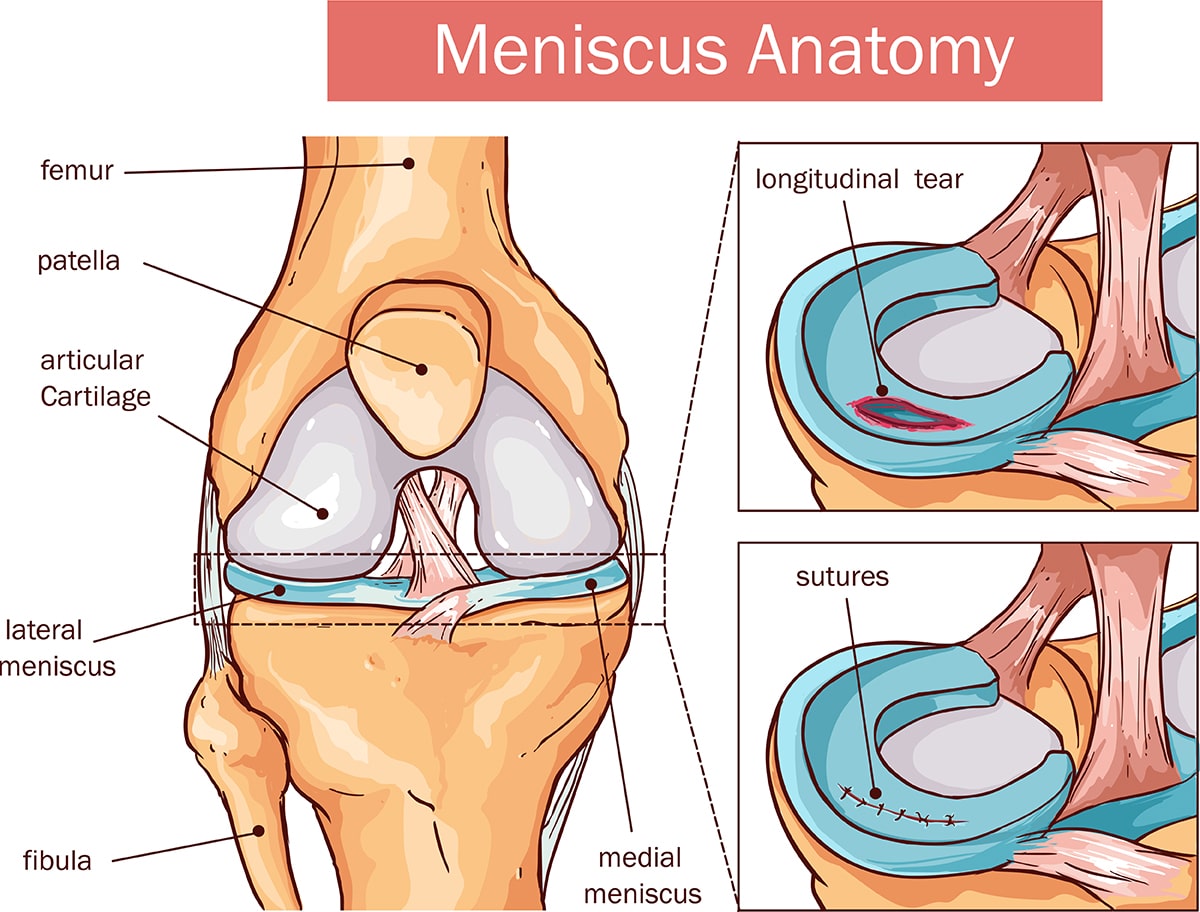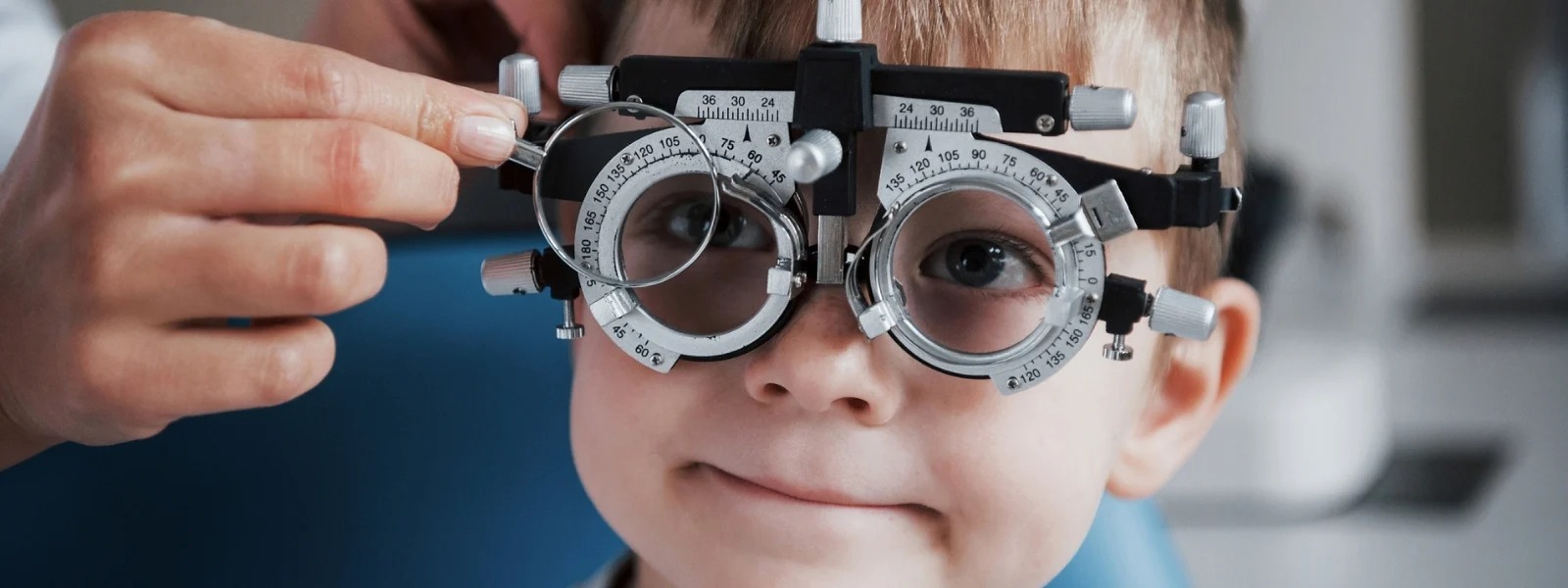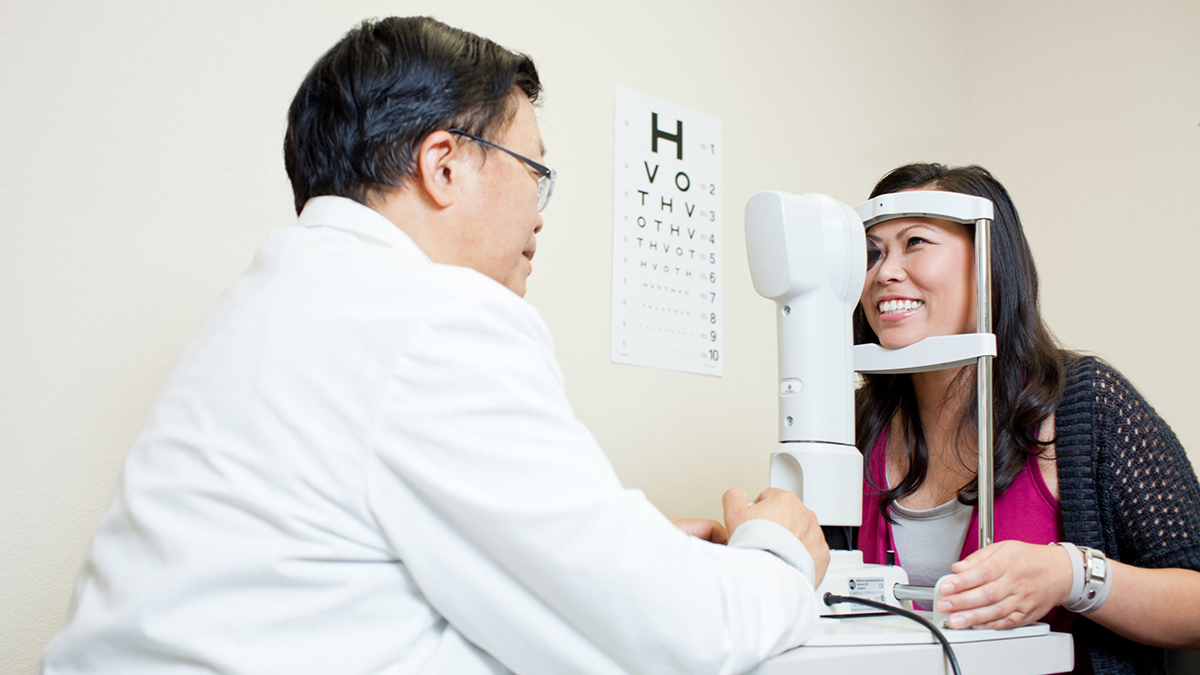Home>Finance>How Much Is Laser Eye Surgery Without Insurance


Finance
How Much Is Laser Eye Surgery Without Insurance
Published: November 23, 2023
Looking into laser eye surgery but don't have insurance? Discover the costs and financing options available to make it more affordable.
(Many of the links in this article redirect to a specific reviewed product. Your purchase of these products through affiliate links helps to generate commission for LiveWell, at no extra cost. Learn more)
Table of Contents
Introduction
Laser eye surgery has become a popular option for individuals looking to improve their vision and reduce their reliance on glasses or contact lenses. This innovative procedure uses laser technology to reshape the cornea, correcting common vision problems such as nearsightedness, farsightedness, and astigmatism. While laser eye surgery offers significant benefits and long-term vision improvement, it’s important to understand the financial implications before making a decision.
In this article, we will explore the costs associated with laser eye surgery, particularly for those who do not have insurance coverage. We will delve into the factors that influence the cost of the procedure, examine the average price range, discuss financing options available to patients, and compare the costs of laser eye surgery with and without insurance. Additionally, we will explore more affordable alternatives for individuals seeking vision correction but are concerned about the financial aspect.
Understanding the cost of laser eye surgery without insurance is crucial for individuals who are considering the procedure. By gaining insight into the cost factors and available financing options, patients can make informed decisions and plan accordingly for this life-changing procedure. Whether you are currently exploring laser eye surgery or simply curious about the expenses involved, this article will provide valuable insight into the financial aspect of laser eye surgery without insurance coverage.
Understanding Laser Eye Surgery
Laser eye surgery, also known as refractive surgery, is a vision correction procedure that uses advanced laser technology to reshape the cornea, the clear front part of the eye. By altering its curvature, laser eye surgery can correct common refractive errors, including nearsightedness (myopia), farsightedness (hyperopia), and astigmatism.
The most commonly performed laser eye surgeries are LASIK (Laser-Assisted in Situ Keratomileusis) and PRK (Photorefractive Keratectomy). Both procedures aim to correct vision problems by reshaping the cornea to improve its ability to focus light onto the retina, thus producing clearer vision without the need for corrective eyewear.
During a LASIK procedure, an ophthalmologist creates a thin, protective flap on the cornea using a microkeratome or femtosecond laser. The flap is then lifted, and an excimer laser is used to reshape the cornea based on the individual’s prescription. The flap is then repositioned, acting as a natural bandage to aid in the healing process.
In contrast, PRK does not involve creating a flap. Instead, the thin outer layer of the cornea, known as the epithelium, is gently removed, exposing the underlying corneal tissue. The excimer laser is then used to reshape the cornea, and a bandage contact lens is placed on the eye to promote healing.
Both LASIK and PRK are outpatient procedures that typically take less than 30 minutes to complete. They are performed under local anesthesia, and patients can usually resume their regular activities shortly after the surgery, although some downtime may be needed for optimal healing.
It is important to note that not everyone is a suitable candidate for laser eye surgery. Factors such as age, overall eye health, corneal thickness, and prescription stability are taken into consideration during the initial consultation with an ophthalmologist. A comprehensive eye examination is conducted to determine eligibility and ensure that the procedure will be safe and effective for the individual.
By understanding the basics of laser eye surgery, individuals can make informed decisions about the procedure and its potential benefits for their vision correction needs. The next section will delve into the factors that influence the cost of laser eye surgery without insurance coverage.
Factors Affecting the Cost of Laser Eye Surgery
The cost of laser eye surgery can vary depending on several factors. Understanding these factors can help individuals determine the potential expenses associated with the procedure. Below are some key factors that influence the cost of laser eye surgery:
- Technology and Equipment: The advancements in laser technology and surgical equipment used during the procedure can significantly impact the cost. Surgeons who use the latest, state-of-the-art equipment may charge higher fees.
- Surgeon’s Expertise and Experience: Highly skilled surgeons who have years of experience and a proven track record of successful surgeries often charge higher fees. Their expertise and reputation can add to the overall cost of the procedure.
- Geographical Location: The cost of living and healthcare expenses can vary significantly from one region to another. Laser eye surgery performed in urban areas or renowned medical facilities may come with a higher price tag compared to less-populated areas.
- Pre- and Post-Operative Care: Before undergoing laser eye surgery, patients typically need to undergo a thorough eye examination to evaluate their overall eye health and determine their eligibility for the procedure. After the surgery, regular follow-up visits and post-operative care are usually required, which can add to the overall cost.
- Customization and Additional Procedures: Some individuals may require additional procedures or customizations to achieve optimal results. These may include wavefront-guided treatment, which uses detailed maps of the eye to guide the laser’s reshaping process, or the use of advanced diagnostic technologies. These additional procedures may increase the overall cost of the surgery.
- Facility and Operating Room Fees: The cost of using a surgical facility and an operating room is an important consideration. These fees often cover the use of specialized equipment, surgical staff, and post-operative recovery areas.
- Prescription Strength: The severity of an individual’s vision problem can also impact the cost. More complex prescriptions may require additional laser time or multiple sessions, which can result in higher expenses.
It is essential to discuss all cost factors with an ophthalmologist during a consultation before proceeding with laser eye surgery. By understanding the various factors influencing the cost, individuals can have a clearer idea of what to expect financially and plan accordingly.
Now that we have examined the factors affecting the cost of laser eye surgery, we will explore the average cost range for the procedure in the next section.
Average Cost of Laser Eye Surgery
The cost of laser eye surgery can vary based on several factors, as mentioned earlier. On average, the cost of the procedure in the United States ranges from $2,000 to $4,000 per eye. This estimate includes both LASIK and PRK procedures.
However, it is important to note that this is a general range and actual costs may differ based on individual circumstances and location. Factors such as geographical location, the surgeon’s reputation and experience, the clinic or surgical facility used, and any additional procedures or customization needed can all contribute to variations in cost.
Advanced technology and equipment, such as wavefront-guided treatment or bladeless LASIK, can also affect the price. These options may offer superior precision and customization, but they often come with a higher cost.
It is essential for individuals considering laser eye surgery to consult with their chosen ophthalmologist to receive a personalized estimate based on their specific needs and circumstances. During the consultation, the surgeon can provide a breakdown of the costs involved, including surgical fees, pre- and post-operative care, facility fees, and any additional procedures that may be required.
While the cost of laser eye surgery may seem significant, it is important to consider the long-term benefits. Many individuals find that the expense is justified by the improved quality of life and the reduced need for corrective eyewear. Over time, the cost of glasses, contact lenses, and related accessories can add up, making laser eye surgery a potentially cost-effective option in the long run.
Now that we have discussed the average cost range of laser eye surgery, let’s explore the financing options available for individuals who do not have insurance coverage in the next section.
Financing Options for Laser Eye Surgery
For individuals who do not have insurance coverage for laser eye surgery, there are several financing options available to make the procedure more affordable. These options can help spread out the cost over time and make laser eye surgery feasible for a wider range of patients. Here are some common financing options to consider:
- Medical Financing Programs: Many clinics and surgical centers offer medical financing programs specifically designed for elective procedures like laser eye surgery. These programs allow patients to pay for the procedure in monthly installments with low or no-interest rates. CareCredit and Alphaeon Credit are examples of popular medical financing programs.
- Flexible Spending Accounts (FSAs) and Health Savings Accounts (HSAs): If you have an FSA or HSA through your employer, you can use the funds to cover the cost of laser eye surgery. Contributions to these accounts are made with pre-tax dollars, which can significantly reduce the out-of-pocket expenses.
- Personal Loans: Taking out a personal loan from a bank or credit union is another option for financing laser eye surgery. Personal loans can provide a lump sum of money to cover the procedure cost, and you can repay the loan with fixed monthly payments over a specified period of time.
- Credit Cards: Some individuals may choose to use their credit cards to finance the cost of laser eye surgery. However, it is important to consider the interest rates and repayment terms associated with credit card use. If using a credit card, it is advisable to choose one with a low-interest rate or a promotional 0% APR offer.
- Negotiating with the Surgeon/Clinic: In some cases, individuals may be able to negotiate the cost of the procedure directly with the surgeon or the clinic. While not always possible, it is worth discussing any financial constraints and exploring potential discounts or payment plans that may be available.
Prior to choosing a financing option, it’s important to carefully review the terms and conditions, including interest rates, repayment periods, and any applicable fees. It is advisable to compare multiple options to find the most suitable and cost-effective solution for your individual circumstances.
Now let’s move on to the next section, where we will compare the costs of laser eye surgery with and without insurance coverage.
Comparison of Laser Eye Surgery Costs with and without Insurance
Having insurance coverage can significantly impact the cost of laser eye surgery. However, it’s important to note that insurance coverage for elective procedures like laser eye surgery is not typically included in standard health insurance plans. Therefore, most individuals will need to bear the full cost of the procedure.
Without insurance coverage, the cost responsibility rests solely on the patient. As mentioned earlier, the average cost of laser eye surgery in the United States ranges from $2,000 to $4,000 per eye. This cost can vary based on factors such as geographical location, surgeon’s expertise, technology used, and any additional procedures or customization required.
However, some insurance plans may offer partial coverage or benefits for specific laser eye surgery procedures. It is essential to carefully review your insurance coverage or speak with a representative to determine whether any benefits are available. If you have an employee benefits package, it is worth inquiring whether any vision care plan or flexible spending account benefits can be applied towards laser eye surgery costs.
In certain cases, insurance coverage may be available for laser eye surgery if it is deemed medically necessary. For example, if an individual has a severe refractive error that cannot be adequately corrected with glasses or contact lenses, insurance may cover the cost of the procedure. However, meeting the criteria for medical necessity can be challenging, and it is essential to work closely with your ophthalmologist and insurance provider to navigate the process.
It is worth noting that insurance coverage for complications or post-operative care resulting from laser eye surgery is typically included in most health insurance plans. This coverage provides peace of mind and can help offset any additional costs associated with unforeseen circumstances or risks.
Overall, while insurance coverage for laser eye surgery is not common, it is important to thoroughly investigate your insurance options and explore any potential benefits or coverage that may be available to you. Discussing the matter with your insurance provider and ophthalmologist can provide more clarity on coverage specifics and potential reimbursement options.
Now, in the final section, we will explore more affordable alternatives to laser eye surgery for individuals concerned about the financial aspect of the procedure.
Affordable Alternatives to Laser Eye Surgery
For individuals who are looking for more cost-effective options or are not suitable candidates for laser eye surgery, there are alternative solutions available to address vision correction. These alternatives may be more affordable and can still provide significant improvements in vision. Here are a few options to consider:
- Glasses: Glasses are a popular and affordable option for vision correction. With a wide variety of frames and lenses available, individuals can find a style that suits their preferences while achieving clear vision. Regular eye exams are necessary to ensure the prescription is up-to-date.
- Contact Lenses: Contact lenses offer a more discreet option for vision correction, providing a natural field of vision. They are available in different types, including daily disposables, monthly disposables, and extended-wear lenses. However, it’s important to follow proper hygiene practices and consult with an eye care professional for fitting and usage instructions.
- Orthokeratology: Orthokeratology, or ortho-k, involves the use of specialized gas-permeable contact lenses that are worn overnight to reshape the cornea temporarily. This allows individuals to experience clear vision during the day without the need for corrective eyewear. Ortho-k can be a viable alternative for individuals with mild to moderate nearsightedness.
- Refractive Lens Exchange (RLE): RLE is a surgical procedure that replaces the natural lens of the eye with an artificial intraocular lens. While similar to cataract surgery, RLE is performed to correct refractive errors rather than treat cataracts. This procedure is generally more suitable for individuals with higher prescriptions or those who are not eligible for laser eye surgery.
- Phakic Intraocular Lens Implants: Phakic intraocular lenses (IOLs) are implanted in the eye to correct refractive errors. Unlike RLE, the natural lens of the eye is preserved, and the phakic IOL is placed on top of or behind the iris. This option is ideal for individuals with higher prescriptions or thin corneas who are not suitable candidates for laser eye surgery.
It is crucial to consult with an ophthalmologist or an eye care professional to determine the most suitable alternative for your specific vision correction needs. They can assess your eyes and discuss the potential benefits, risks, and costs associated with each alternative. Ultimately, finding an affordable alternative that meets your visual and financial requirements is key to achieving clear vision without breaking the bank.
Now that we have explored affordable alternatives to laser eye surgery, let’s conclude this article.
Conclusion
Laser eye surgery offers a transformative solution for individuals looking to improve their vision and reduce their dependence on glasses or contact lenses. However, it’s important to consider the financial implications before proceeding with the procedure, especially for those without insurance coverage. By understanding the factors that influence the cost of laser eye surgery, exploring financing options, and considering more affordable alternatives, individuals can make informed decisions about their vision correction needs.
Factors such as technology and equipment, surgeon’s expertise, geographical location, and additional procedures can impact the cost of laser eye surgery. The average cost in the United States ranges from $2,000 to $4,000 per eye, but this can vary based on individual circumstances.
Fortunately, there are financing options available, such as medical financing programs, flexible spending accounts, personal loans, and credit cards, which can make laser eye surgery more accessible and manageable for patients. Exploring these options and discussing them with a healthcare provider can help individuals find a solution that fits their budget.
In cases where laser eye surgery is not feasible or preferred, alternative options like glasses, contact lenses, orthokeratology, refractive lens exchange (RLE), or phakic intraocular lens implants can provide effective and more affordable vision correction solutions. Consulting with an eye care professional can help determine the best alternative for individual needs.
Ultimately, the decision to undergo laser eye surgery or pursue an alternative vision correction method is personal and should be based on a thorough understanding of the costs, benefits, and individual circumstances. By weighing the financial aspects alongside the potential long-term improvements in quality of life, individuals can make an informed choice about the best path forward for their vision correction needs.
Remember, whether you choose laser eye surgery or an alternative solution, prioritizing your eye health and consulting with qualified professionals are key steps towards achieving clear and improved vision.














